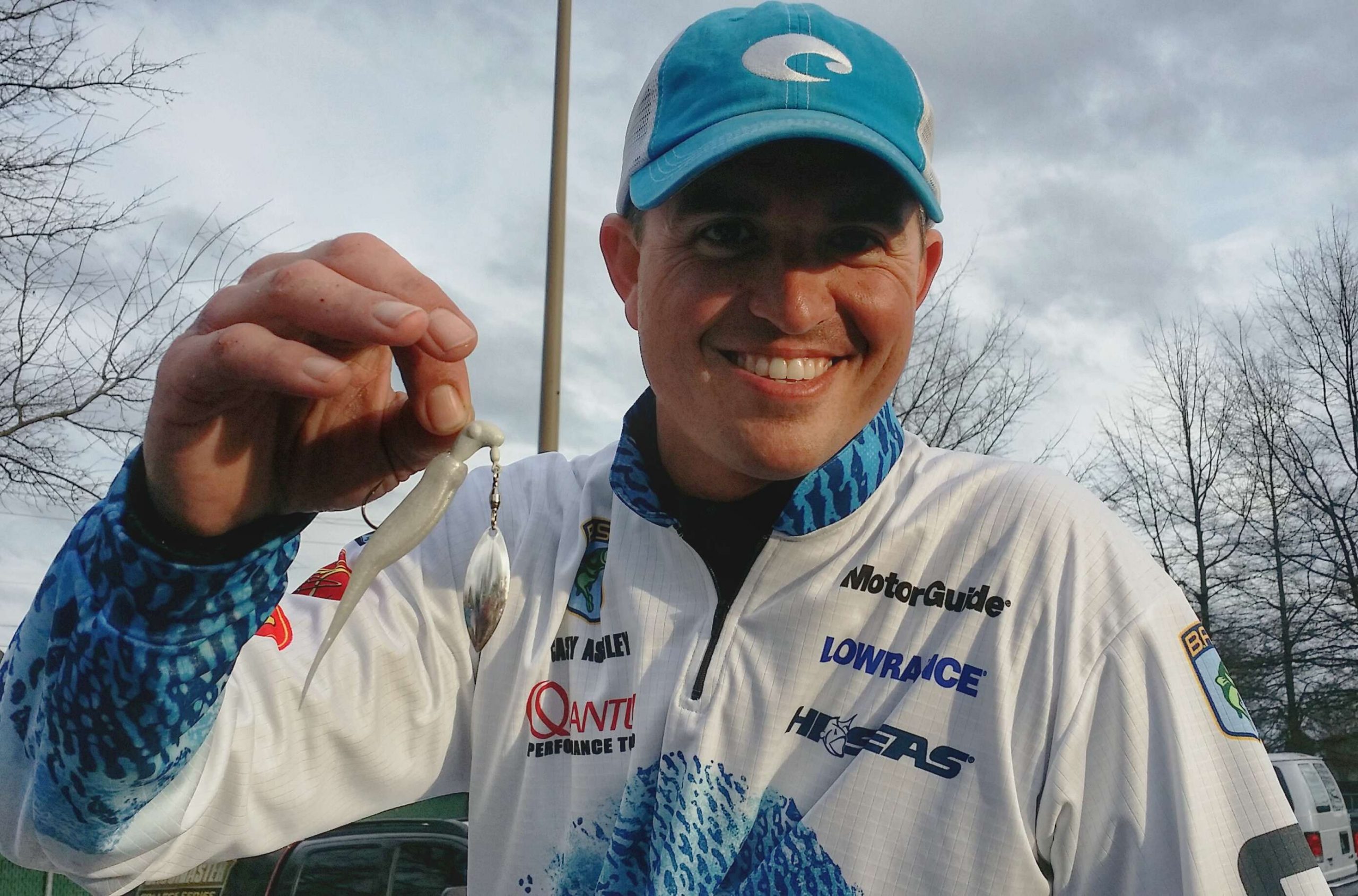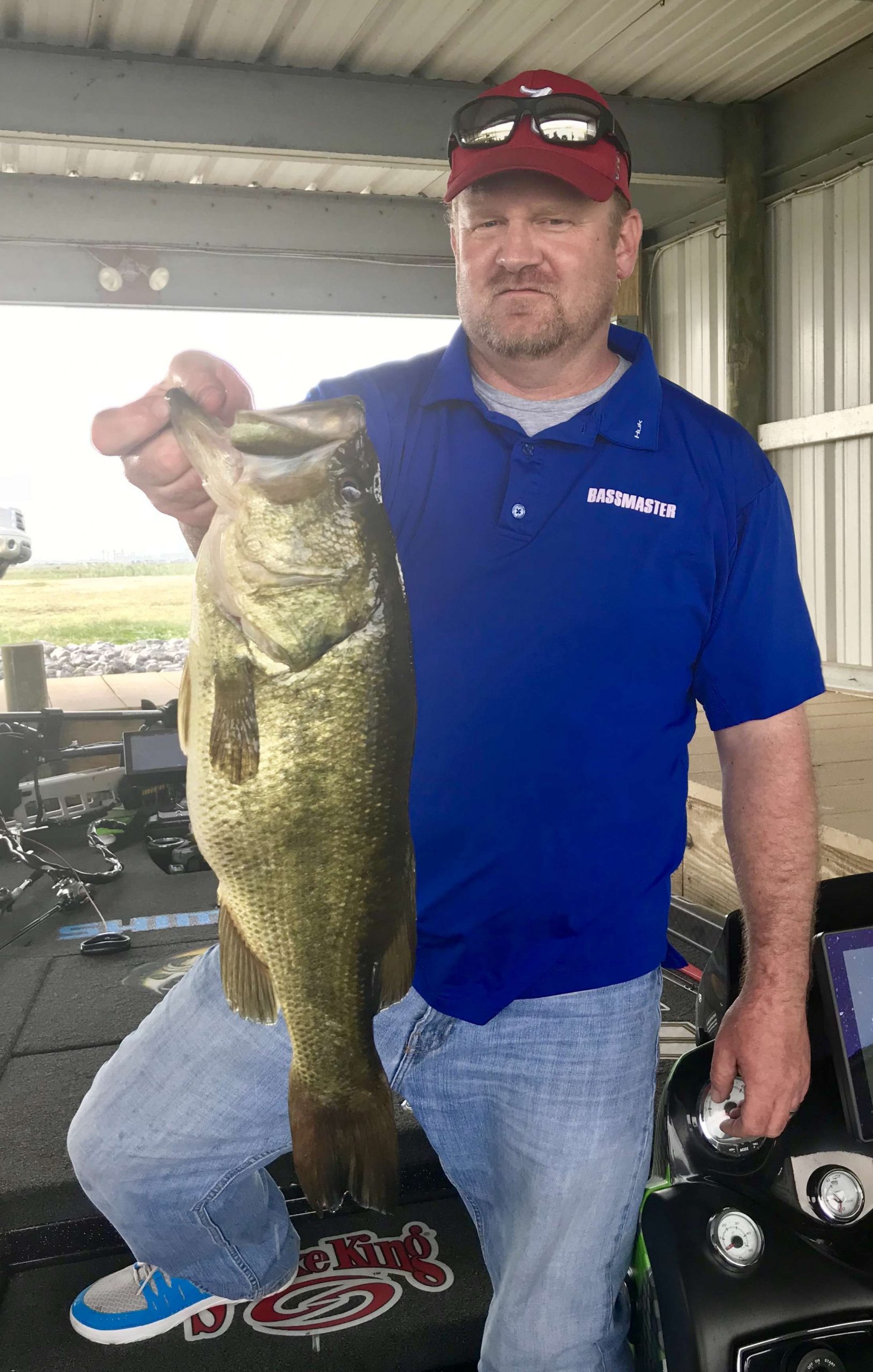
Before last week’s GEICO Bassmaster Classic presented by GoPro on Lake Hartwell, two questions could be heard across Upstate South Carolina from Anderson to Greenville.
First: “Why would anyone fish in 10-degree weather with icicles hanging from docks and boats freezing to their trailers?
And next: “How would they catch anything in such demanding conditions?”
The why was easy. Because it was the Classic, with fishing’s most-coveted trophy and a $300,000 first-place prize at stake.
And now that it’s all over, here’s a closer look at how the world’s greatest anglers caught the fish that placed them near the top of the Classic standings:
Lure that ruled the Classic: The Fish-Head Spin
Whether it was the homemade version hand-poured by champion Casey Ashley’s father, Danny, or the one used by Jacob Powroznik, the simple-looking Fish-Head Spin put a lot of fish in the boat last week on Lake Hartwell.
Using his father’s homemade bait, Ashley worked two areas where bass he found suspended in deep timber during practice had moved onto nearby flats by opening day.
“The bait is nothing special, just a bait we’ve been making and using for years,” Ashley said. “It’s got a pony head, a Sampo swivel and a 4/0 Mustad hook. But what really catches the fish is the Zoom Super Fluke Jr., I was using on the back of it. I was using pearl white.”
He said long casts were important because the fish were skittish in the clear water. He also said he fished the bait so “painfully slow” that he often had to dip his rod into the water twice on each cast to combat icing issues during the bitter cold Friday.
After abandoning the bait Friday and Saturday in favor of a jig once he had a limit, he decided to stick with it all day Sunday. The result was a catch of 20 pounds, 3 ounces that helped him win the Classic with 50-1.
Powroznik fished a pattern similar to Ashley’s, using a Fish-Head Spin rigged with a V&M fluke-style bait in pearl white.
“I was fishing in the backs of pockets where the water would come from 50 feet up to about 20 feet and make a flat,” said Powroznik, who finished fifth with 43.1. “That was the warmest water in the lake first thing in the morning. The bite would only last about an hour if it was sunny, and I would have to do something else.”
Revolving game plans for early, late
With the conditions so cold out of the starting gate, many anglers came armed with two strategies – one for the morning and one for the afternoon.
For the final two days, Bobby Lane used a Yo-Zuri Mid Crank early to fish between docks. Then as the water temperature began to rise and the fish began roaming, he started using a jig.
“Later in the day, when the water temperature started getting up and the fish started moving around on those docks, I was just skipping a jig around with a Havoc Craw Fatty on the back,” Lane said. “It was a green pumpkin/orange jig with a green pumpkin trailer.”
Lane caught 17-4 on Day 2 and then made a fantastic final charge with 19-1 on Day 3. But it was a frigid, weather-shortened Day 1 when he only managed 10-10 that sank him.
He finished second with 46-15.
Iaconelli’s ‘weapon bite’
Like Lane, Iaconelli was switching tactics once the conditions changed. But the change he was making was much more radical.
Iaconelli – as perhaps only he can do – coined a new phrase for the early-morning tactic he was using to target largemouth bass feeding on blueback herring in the backs of drains and pockets.
Calling it the “Weapon Bite,” Iaconelli ran from spot to spot looking for birds, specifically loons and gulls, feeding on herring. That told him there were likely to be feeding largemouth present as well.
“I was using a Rapala Shadow Rap in a color pattern called moss back,” Iaconelli said. “They key to it was finding an area that had bait – and even then, it only lasted for an hour or so.”
After that, Iaconelli shifted to using a Missile Jigs football-head jig in 30 to 40 feet of water.
The popular New Jersey pro finished sixth with 42-6.
Powroznik’s red-belly bass
Since Powroznik was only using the Fish-Head Spin until about 9 a.m., he was spending the majority of his day fishing deep water with a 6-inch V&M Magnum Finesse worm.
Surprisingly, he was trying to avoid the man-made structure that is so popular on Lake Hartwell.
“The key to my stuff was to get away from all of the structure, the brush piles and stuff,” said Powroznik, who finished fifth with 43-1. “In between all that stuff, there’s always a high spot where there’s red-clay mud. When it gets cold like that, they get up there and lay in that mud because it’s a whole lot warmer. So when you catch one, their bellies are real red.”
Keeping it surprisingly simple
Tournament anglers across America keep two lures/tactics in reserve for when the conditions turn sour: The drop-shot rig and the shaky-head worm.
Elite pros utilize those methods, too – and sometimes even for a Top 5 Classic finish.
Takahiro Omori, a Japanese pro who now lives in Emory, Tex., used a Yamamoto Shad Shape Worm on a drop-shot rig for much of the week in one 200-yard stretch to put together a third-place catch of 44-3.
Arizona angler Dean Rojas finished fourth with 43-13 using a Spro Gamakatsu Alien Shakey Head rigged with a prototype plastic from Big Bite Baits.
Lucas’s magic dock
California angler turned Alabama resident Justin Lucas also used a drop-shot rig and a shaky-head worm for much of the week. The Berkley Havoc Bottom Hopper was his main plastic.
He weighed 13 fish for the week that weighed 40-2, and all of them came from one dock.
“It was in the mouth of a nice, little pocket, near a point,” Lucas said. “It had some great features. I should have stayed there longer the first day when I only brought in three fish.”
The same dock that produced Lucas’s fish also produced a 6-11 largemouth for Aaron Martens.
The elusive blueback herring bite
On a lake like Hartwell with so many bass busting blueback herring along the surface, it’s hard for anglers to resist fishing for those feeding bass. But it’s a risky endeavor.
Indiana angler Jacob Wheeler was targeting a big school of fish chasing herring in the back of a pocket on Day 3 with a Rapala Shadow Rap. The fish disappeared momentarily and then resurfaced right next to his trolling motor.
“I dropped down and hooked a 2 ½-pounder, but I lost it,” said Wheeler, who finished 14th with 37-10. “Then I dropped back down and hooked another one that I put in the live well. I hooked two bass in about 10 seconds. It can happen that fast. But in a tournament like this when you’re fishing the herring bite, you have to make every fish count.”
Arkansas angler Mike McClelland, who finished eighth with 41-7, said a run-and-gun approach is also important in herring scenarios.
“The thing about blueback herring lakes is you absolutely have to be in the right place at the right time,” McClelland said. “That means you have to cover a lot of water. So I learned a valuable lesson this week. When we go back to another fishery like this one, I’ll plan on covering a whole lot more water.”
Fading pattern of the week
Texas pro Keith Combs left the Classic scratching his head after placing third on Day 1 with 18-plus and then catching only three keepers the rest of the way.
Combs was fishing areas where river and creek channels cut in next to the bank with a Strike King Lucky Shad crankbait. He was positioning his boat in 25 to 30 feet of water and casting into 6 to 8 feet.
“All I can figure is the prolonged cold finally got the best of them,” Combs said. “But it was a good pattern, and it will be again.”

